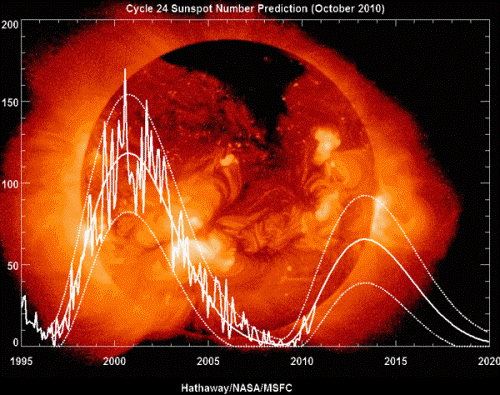
At a press conference earlier today, NASA scientists announced the discovery of three new ‘Super Earths’ — exoplanets that are slightly larger than our own Earth — one of which is the most Earth-like exoplanet ever found in a sun-like star’s habitable zone.
This latter of the three new Super Earths is called Kepler-69c and it is 1.7 times the size of our Earth, making it the smallest alien world found in the habitable zone (the “just right” zone for liquid water to exist) of a star of the same magnitude as our sun. The exoplanet hunters from NASA are calling this discovery a big step towards discovering the first ever (true) “alien Earth”.
But the two other discoveries are also intriguing: they are slightly smaller (i.e., more Earth-like in size) and also orbit within their slightly dimmer parent star’s habitable zone. The first of these is Kepler – 62f, believed to be a rocky world and weighing in at 1.4 times the size of the Earth. The remaining, newest found planet is a close neighbor called Kepler – 62e, which is a bit further out from its sun than K-62f but still within its habitable zone. Its size is estimated to be 1.6 Earth masses. Together, the pair of exoplanets are amongst the smallest, habitable zone planets found within the same solar system.
These latter two discoveries are part of a five-planet system and “look very good as possibilities for looking for life,” stated Kepler science principal investigator Bill Boruck at the press conference held today at NASA Ames Research Center, Moffet Field (Mountainview) California.

These three candidate super Earths are part of a larger, 7-planet trove, five of which are in the Kepler-62 system (1,200 light-years away in the constellation Lyra), but only Kepler-62e and f are potentially habitable; according to the astronomers, as the other three orbit too close to their parent star, making them too hot to host life (as we know it). An exoplanetary model indicated that both are ‘e’ and ‘f’ are possible “water worlds” covered by “uninterrupted oceans”.
The two other exoplanets (Kepler-69c and b) are part of the the Kepler-69 system located 2,700 light years distant in the constellation Cygnus. While K-69c may be the most Earth-like candidate yet found, its neighbor, K-69b, is twice the size of Earth and believed to be too hot to host life. Nevertheless, both are positive signs that the hunt for a true “alien Earth” is getting closer to its goal.
“I think we’re making excellent progress in that direction,” Borucki said. “We have a number of candidates that look good.”
These are exciting times for exoplanet investigations with 2013 shaping up to be the year to find the first, truly Earth-like exoplanet (orbiting in the habitable zone of a sun-like start). This past January, the Kepler probe discovered the so-called “twin Earth” KOI 172.02.
“We’re moving very rapidly toward finding an Earth analogue around a star like the sun,” Borucki told SPACE.com.
But there’s one big excitement-dampening hitch: while Kepler can certainly identify candidate, Earth-like exoplanets, it is not equipped to actually verify life on these worlds (that would take a quantum leap in telescopic technology). Fortunately, there are other telescopes that can examine and analyze the spectral lines of these planets and make fair guesses as to their atmospheric makeup.
So, expect more news in the weeks and months to come as astronomers home in on these alien worlds.
For more on this announcement, check out the Yahoo News Article ‘Discovered! Most Earth-Like Alien Planet & 2 Other Possibly Habitable Worlds‘

